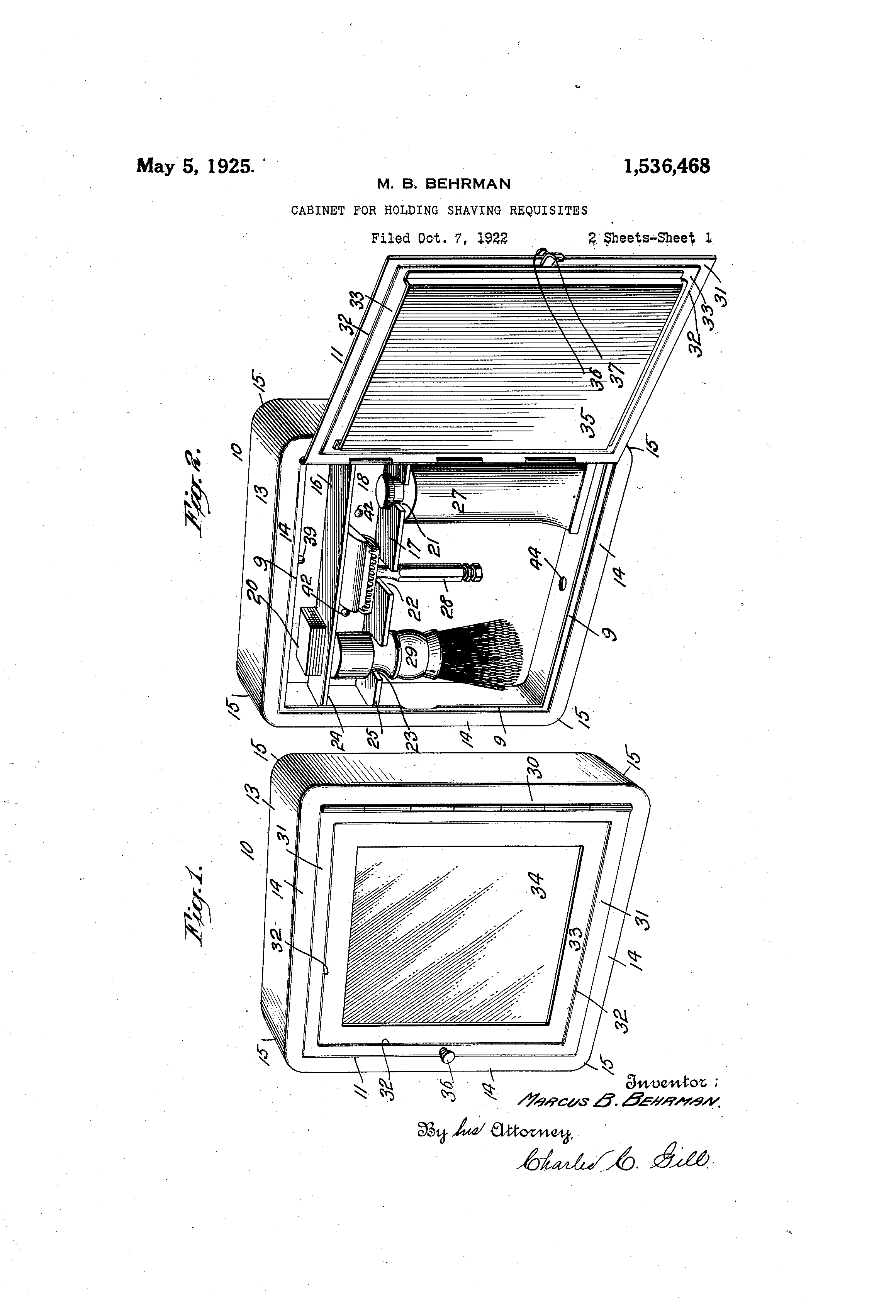Most of us are happy with a single or double edge razor. Some want more than that, and I’m not talking about carts… I’m talking quad-edge. And I’m not talking about the one that Mr J K Waterman patented in 1909, no… This one is a bit newer, and was filed by Robert E Hamilton in 1924.
So lets see that Robert tried to achieve, that the offerings with fewer edges failed at:
…its prime object to generally improve upon such devices by providing a simple and efficient construction which will afford a maximum number of shaves with a minimum amount of trouble, one which is reliable, inexpensive to manufacture, easy to manipulate, strong, durable, and well adapted to the purpose for which it is designed.
US patent 1,721,113
As can be seen from the patent drawing, Robert’s razor features a massive – and I mean massive – head. The square top cap, plate, bottom plate, and handle is secured together in a somewhat convoluted way.. Lets quite Robert again:
A guard plate 7 having a square formation is provided with a concave inner surface indicated at 8 on which is mounted a U-shaped spring clip 9 by means of a screw 10. This verging terminals 11 and is adapted to be inserted through the square opening 2 so that its diverging terminals 11 overlap the outer face of the body 1. The upper face of the body 1 is of a substantially concaved formation and a square blade 12 is adapted to rest thereon being held in place by the guard plate 7. This blade is provided with four cutting edges and the corners thereof are prevented from contacting with the skin by guards 6. A bracket 14 is mounted on the outer face of the body 1 over the opening 2 and is provided with a threaded opening for receiving the reduced threaded extension 15 of a handle 16.
US patent 1,721,113

Clear as mud? No? Didn’t think so… as best I can make out you insert the four descending leaf springs from the top cap through the blade and into slots in the bottom plate. The handle just screws to the bottom plate, so you could in theory use aftermarket handles.
The whole patent can be read at Google Patents.
















